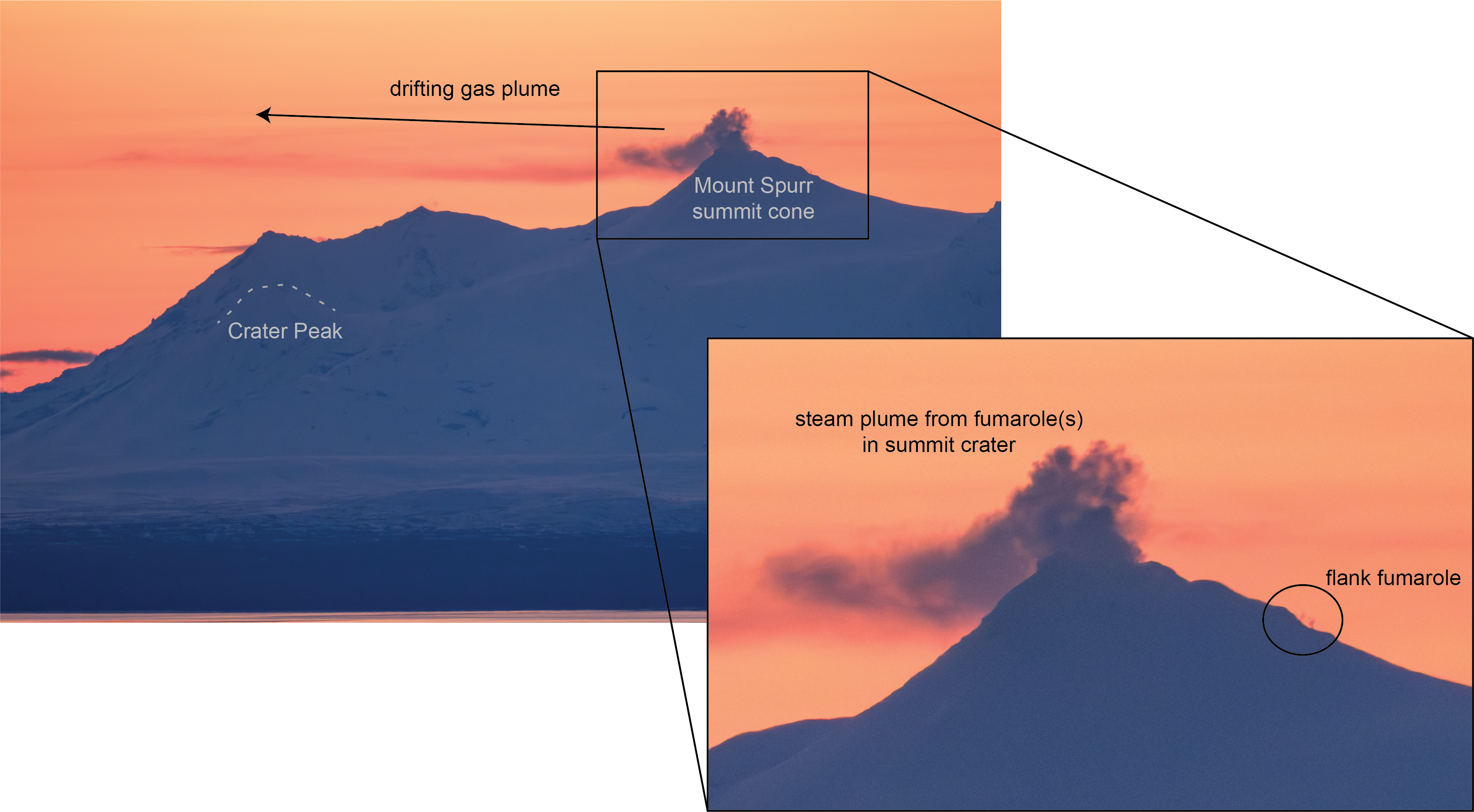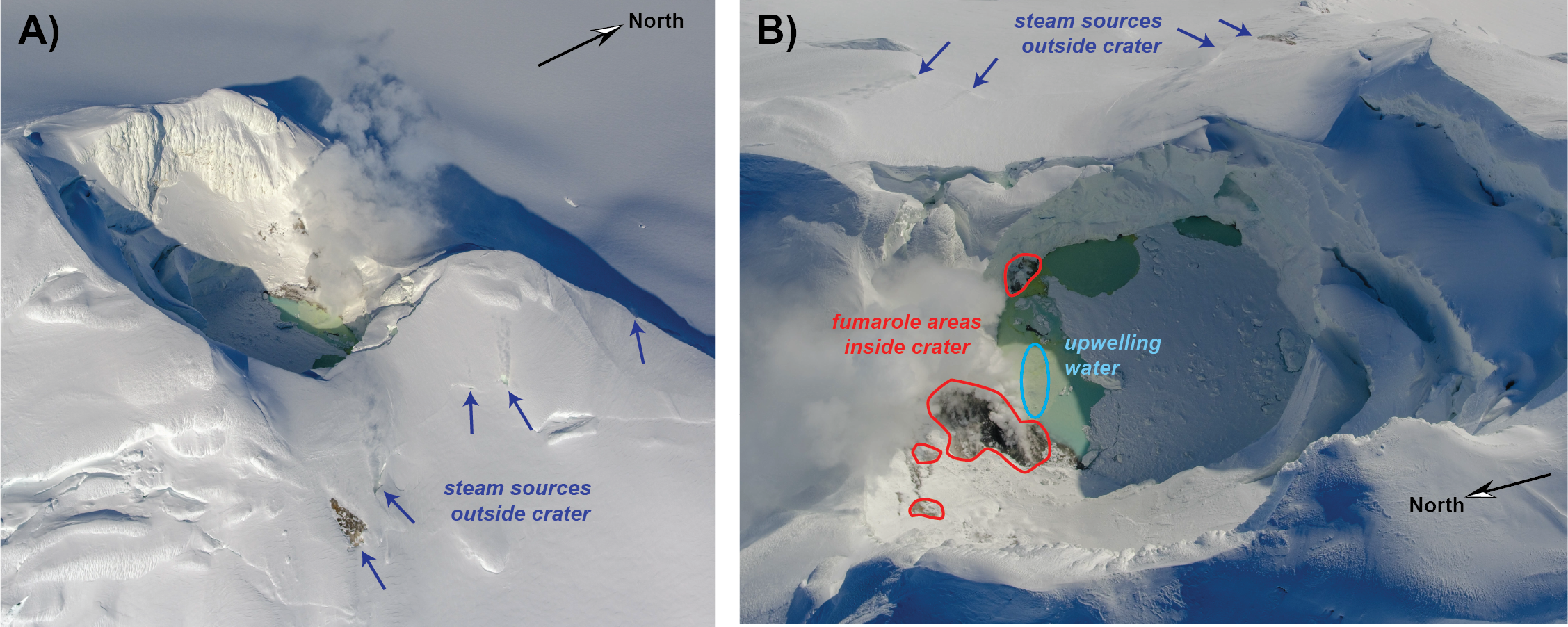Why does Mount Spurr's plume look different on different days
Over the past several days AVO has received numerous photographs and questions about the appearance of Mount Spurr's volcanic plume. Many people have noticed the plume appearing larger than previous days and are wondering if it is related to volcanic activity. AVO believes the robust plume observed in recent days is primarily related to atmospheric conditions and not a change in volcanic activity. The visible appearance of a volcanic plume by itself cannot conclusively indicate an increase in volcanic gas emissions because volcanic plumes may look different at different times, or even at the same time from different locations.
One of the most important factors influencing volcanic plume appearance is wind speed. Under light winds a warm volcanic plume can rise buoyantly in the atmosphere. This can produce a "lofted" plume, where the plume may extend vertically for hundreds of meters. Such a lofted plume can often be mistaken for an eruption plume. Light winds also allow the plume to spread horizontally such that it may appear very wide and may be easily seen from far away. Light winds were occurring around Mount Spurr’s summit on March 26, permitting it to loft into the air. In contrast, under high winds the plume may be blown down the volcanic edifice and not rise above the summit vent. In this case, the plume would likely not be visible from Anchorage.
Condensation of water vapor is enhanced in certain atmospheric conditions such as cool, wet conditions and is diminished during warm, dry conditions. This can produce a plume that is more visually apparent on some days than others even if the total volcanic gas emissions remain similar. The atmospheric conditions on March 26 were favorable for condensation of the Mount Spurr plume, making it more visible to the human eye.

AVO’s analysis of satellite remote sensing and geophysical data from March 26 showed no notable changes. These observations, in tandem with the favorable atmospheric conditions, suggest the robust plume from Mount Spurr in recent days was not a result of increased volcanic activity. An additional news item in the near future will discuss Mount Spurr’s volcanic plume and how AVO scientists are tracking it.